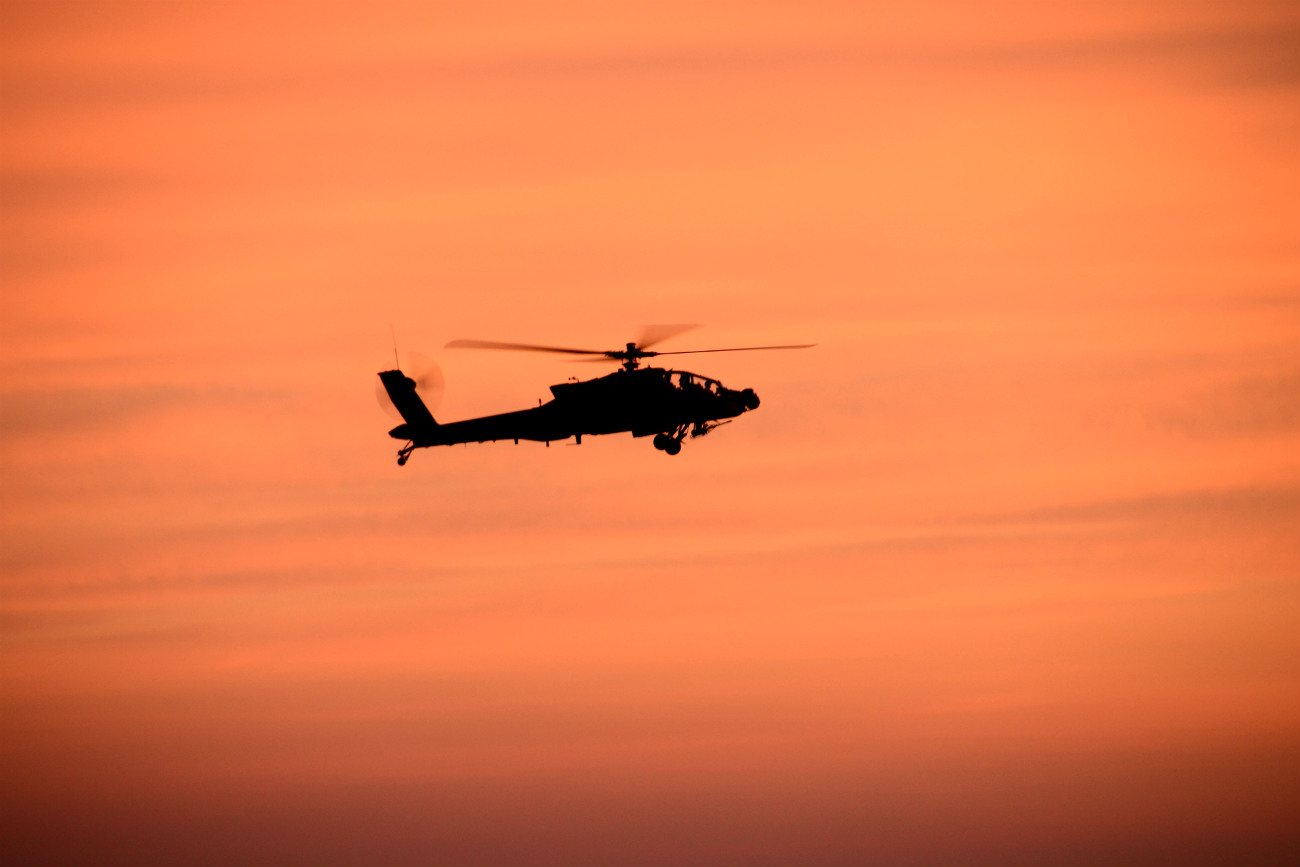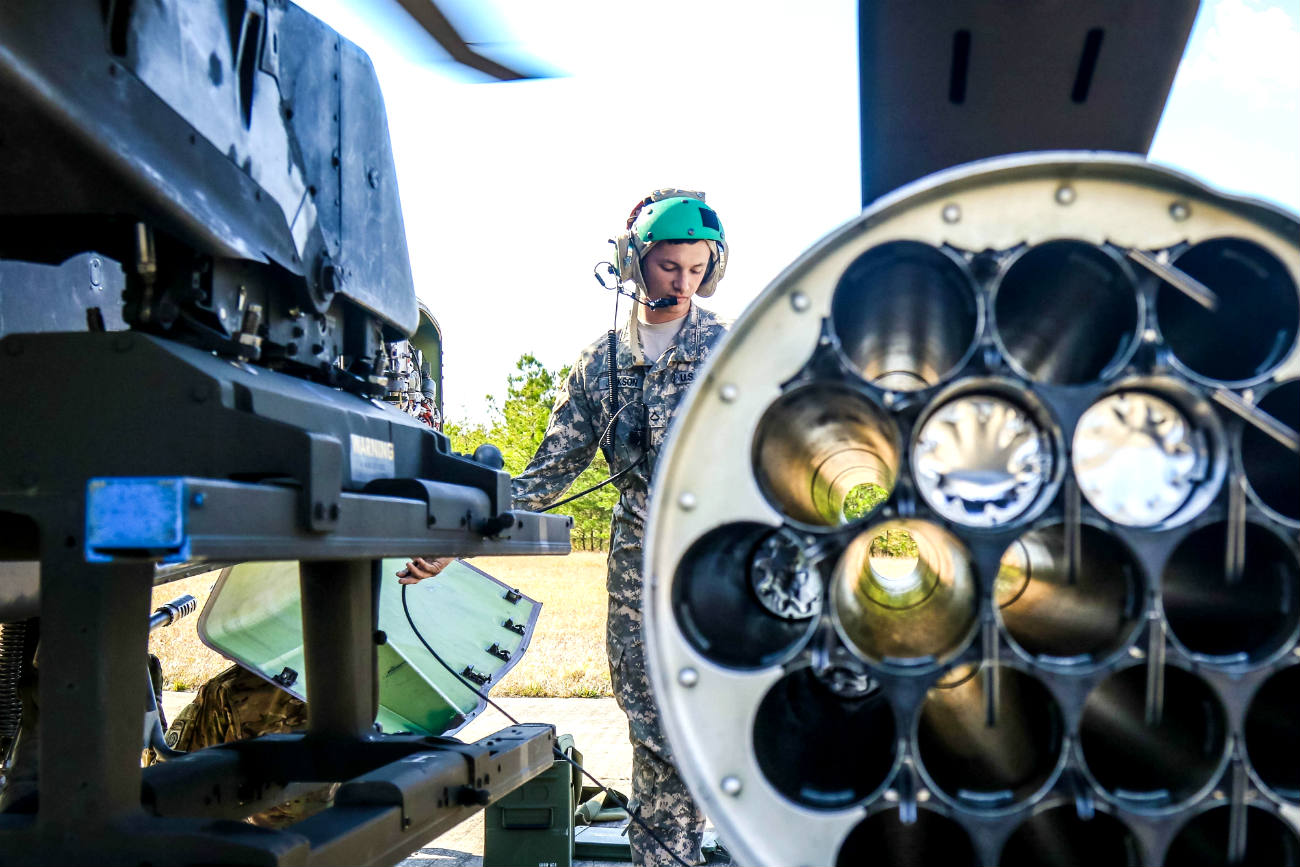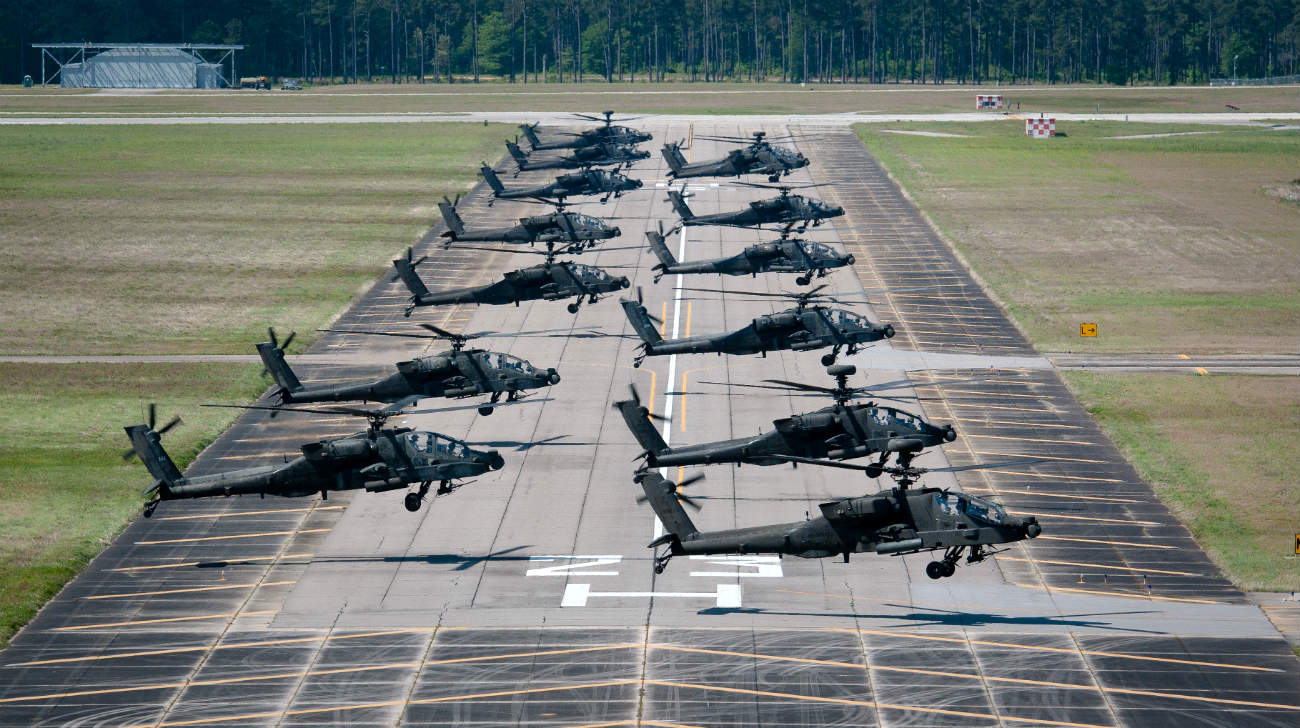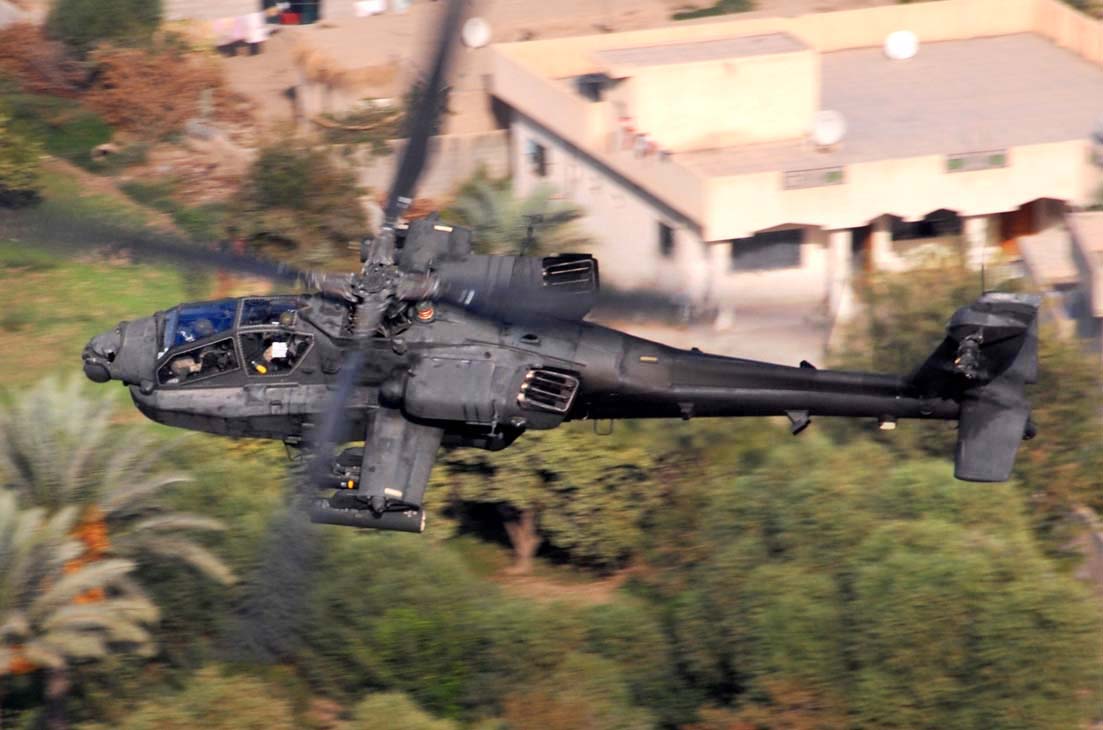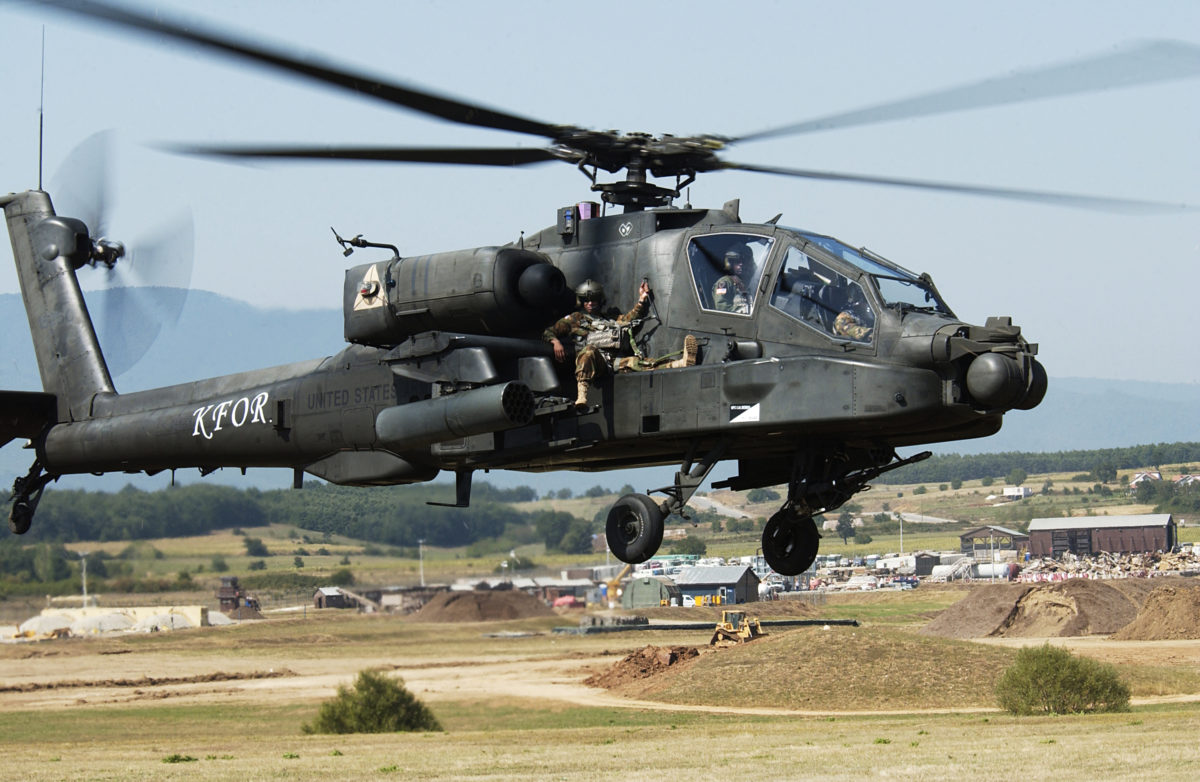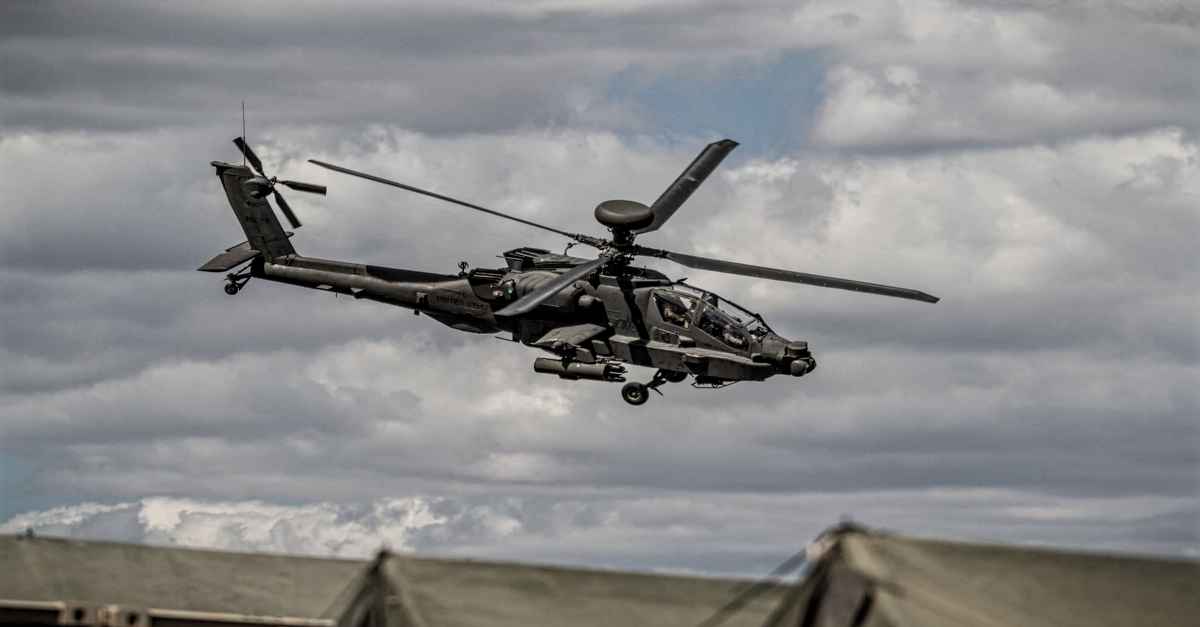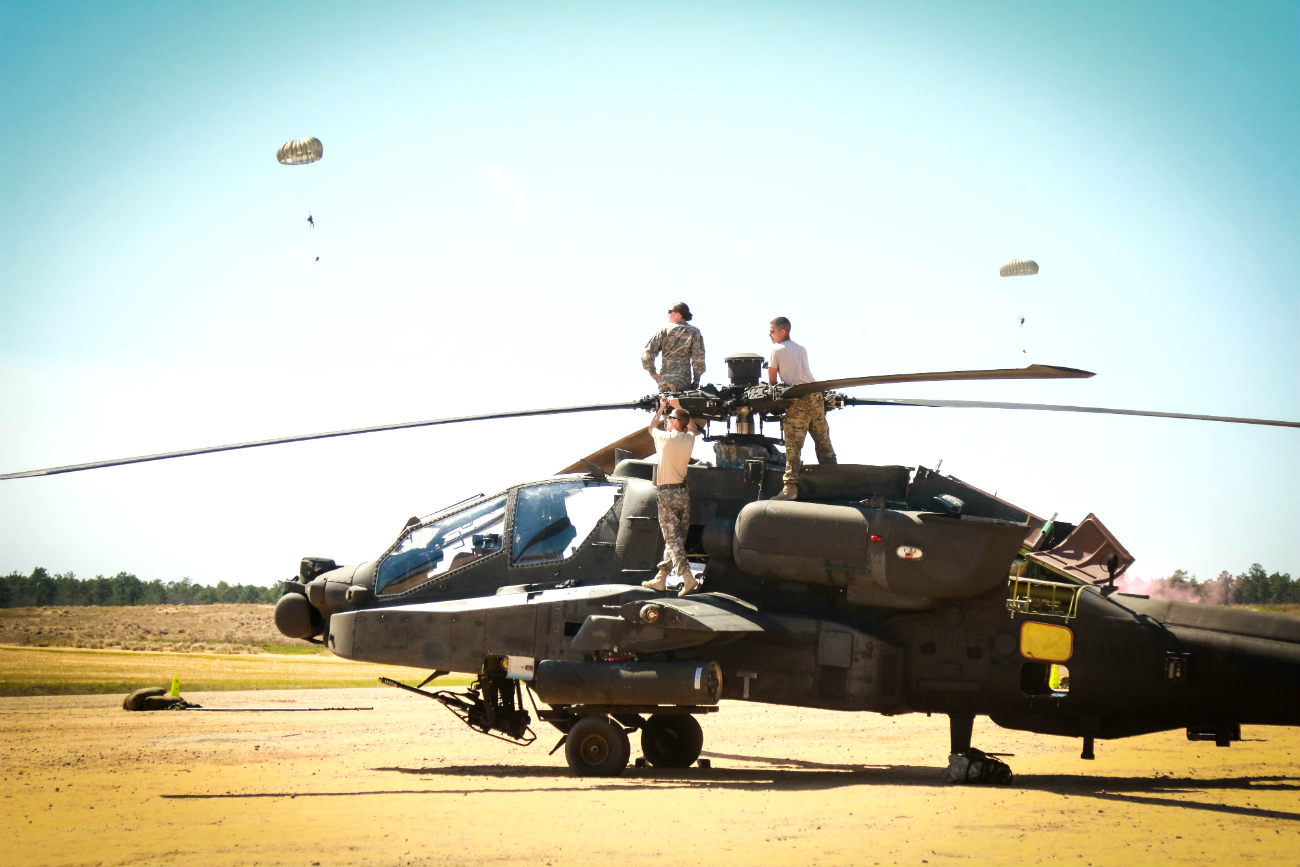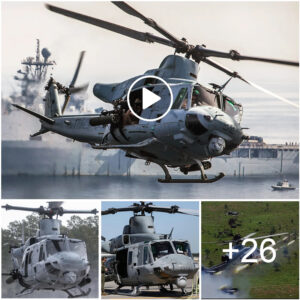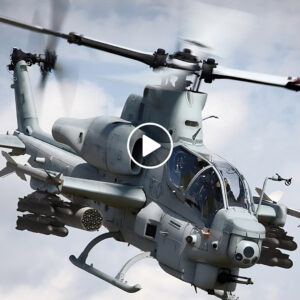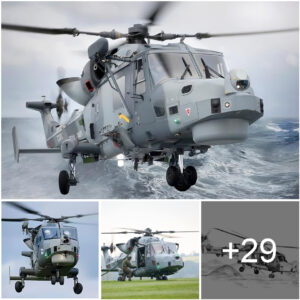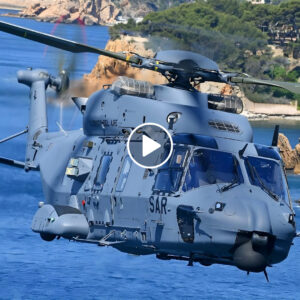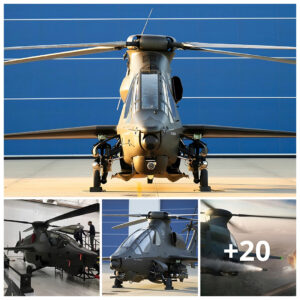The AH-64 Apache is an attack helicopter produced by Boeing Defense used in close air support operations. It operates through the use of a twin engine turboshaft identical to the ones used in the UH-60 Black Hawk. The Apache has participated in combat operations in every major conflict the United States has faced since the Persian Gulf War and has exceeded all expectations for what an attack helicopter can achieve.
Fire Control Systems
Upgrades to the AH-64E Longbow enable it to use a fire control radar module and can even be used to control and communicate with unmanned aerial vehicles operating in the area. Plans to further upgrade the AH-64 Apache aircraft rmyre currently in the works but the US Army has plans to replace the AH-64 with the Future Vertical Lift program.
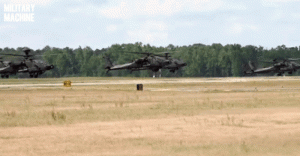
Extensive Service
Boeing claims to have delivered over 2,100 AH-64s to customers including the United States and foreign countries. The first Apache was delivered in 1984 and the entire fleet has achieved a cumulative 39.2 million flight hours and growing in theaters of conflict such as Afghanistan and Iraq. Leading customers outside of the United States and Great Britain include Egypt, Greece, Israel, Japan, and Korea.
Firepower
The AH-64 Apache attack helicopter seats two crewmembers — the pilot and gunner. The pilot sits up front and the gunner sits behind him. Gunners can control weapons systems and coordinate with other units on the ground and air while the pilot maneuvers, communicates, and shoots via a helmet-mounted tracking system. Its main armaments include a chaingun located below the nose and capacity for air-to-surface missiles and rockets.
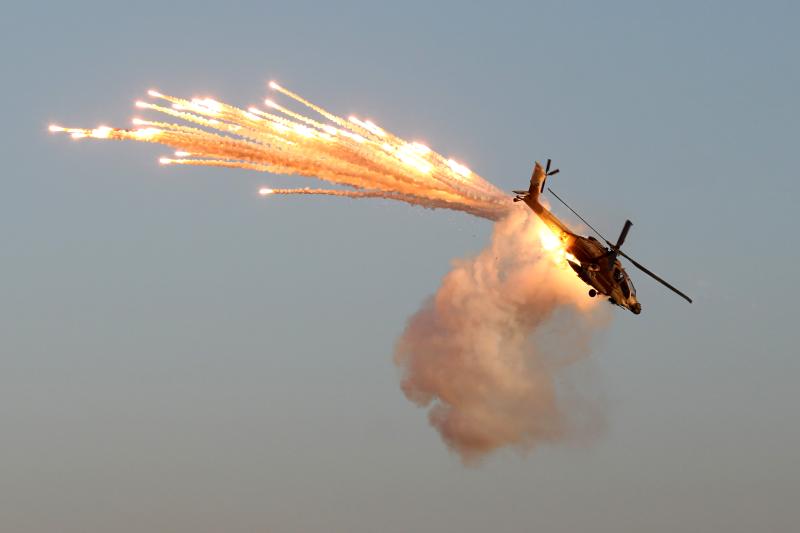
Targeting
Missiles such as the HELLFIRE air-to-surface missile are guided by radar and once locked onto target, are fire-and-forget. The weapon systems attached to the Apache can be controlled via the Integrated Helmet and Display Sighting System (IHADSS) located in the pilot and gunner’s helmet. This allows a pilot to target track his main gun via sight and place kinetic fire on targets.
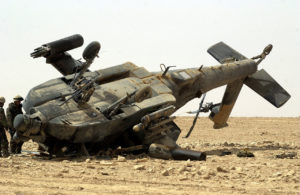
Survivability
The military helicopter was designed to take an incredible amount of damage and continue operations. It meets all requirements outlined in MIL-STD-1290 which are military standards to abate injury or death to crewmembers in the event of a crash. Shielding is designed to ensure at least one crewmember survives a direct hit and can continue to operate the rotary wing aircraft. With 2,500 lbs. of armor and self-sealing fuel systems, the Apache can take a lot of ballistic damage.
AH-64 Apache Sensors
With the advancement of sensors, the nose of the aircraft holds a staggering array of detection, target acquisition, and target tracking capabilities. The upgraded AH-64 Longbows have the capability to have a fire control radar located above its main rotors. L-3 Communications is in the process of installing advanced communication links to enable the weapons officer to communicate with UAVs in the area.
Future advances on this airframe include electronic warfare systems, advanced sensors, and potentially an Active Electronic Scanning Array which would increase the stealth capabilities of the AH-64 Apache. The current models include the AH-64D/E/F with plans to upgrade all existing Apaches to the F variant.
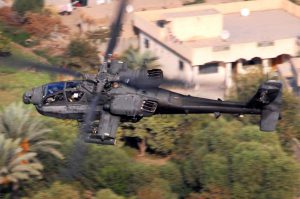
Propulsion
The AH-64 Apache attack helicopter, produced by Boeing Defense, is powered by two General Electric T700-GE-701 turboshafts. Each T700-GE-701 produces up to 1,690 shp (1,260 kW) each. These have been upgraded to the T700-GE-701C for the AH-64A/D program that began in 1990. Each turboshaft engine produces 1,890 shp (1,409 kW) each. Future upgrades anticipate the usage of the T700-GE-701D
See AH-64 Apache Specifications
| Length: 49 ft 5 in (15.06 m) |
| Height: 12.7 ft (3.87 m) |
| Disc Area: 1,809.5 ft² (168.11 m²) |
| Unladen Weight: 11,387 lbs. (5,165 kg) |
| Max. Takeoff Weight: 23,000 lbs. (10,433 kg) |
| Maximum Speed: 158 knots (182 mph, 293 km/h) |
| Cruise Speed: 143 knots (165 mph, 265 km/h) |
| Rotor Systems: 4 blade main rotor, 4 blade tail rotor |
| Range: 257 nmi (295 mi, 476 km) |
| Service Ceiling: 21,000 ft (6,400 m) |
| Crew: 2 |
| Unit Cost: AH-64F (new) $35.5 million USD |
